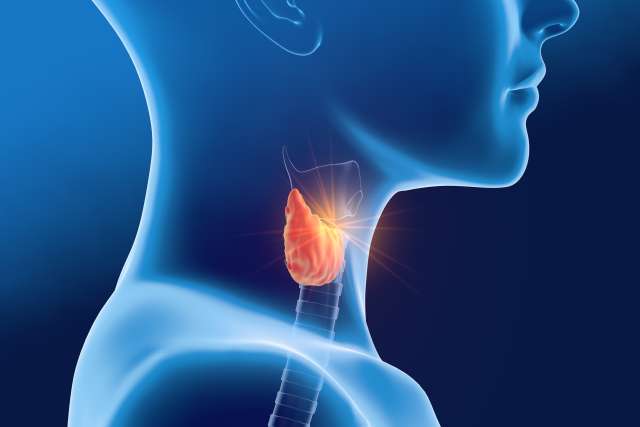Dear Doctors: I had a kidney transplant two years ago, and I have developed thyroid nodules. Are they dangerous? I would like to ask about radio ablation to remove them. Is it an established procedure, or is it in the investigative stage? What does it entail?
Dear Reader: For those who are not familiar, the thyroid is a small gland located at the lower front of the neck, just above the collarbone. It consists of a left and right lobe, which are connected by a small band of tissue known as the isthmus. Taken together, these form a shape somewhat like a butterfly or a bow tie.
For such a small structure, the thyroid has a lot to do. It plays a key role in regulating the body's metabolic rate, growth and development. Heart, muscle and digestive function, as well as brain development and bone maintenance, all depend on the hormones the thyroid produces.
Among the diseases and disorders that can occur in the thyroid is a condition known as thyroid nodules. These are small, solid or fluid-filled growths that develop within the lobes of the thyroid gland. As people age, thyroid nodules become more common. It is estimated that half of adults 45 and older have them. Thyroid issues, including the presence of nodules, are also common among people living with, or recovering from, kidney disease.
When thyroid nodules are small, they do not cause symptoms. Larger ones may lead to discomfort when swallowing or a physical sensation of tightness while lying down, when wearing a tight collar or while breathing hard. In some cases, the presence of nodules can lead to an overproduction of thyroid hormone. This is a condition known as hyperthyroidism.
When nodules are detected, they are evaluated with the use of imaging scans such as ultrasound and with blood tests that reveal thyroid function. When malignancy is suspected, a biopsy using a thin needle to draw out a bit of tissue from the nodule for analysis will be performed.
Benign thyroid nodules that remain unchanged do not affect thyroid function, and they do not cause physical symptoms and often don't require treatment. When circumstances call for their removal, radiofrequency ablation, or RFA, is an option.
RFA is a well-established procedure in which radio waves are used to create heat, which reduces or eliminates the nodules. During this procedure, a surgeon uses ultrasound to guide the tip of a small needle electrode into the nodule. Heat generated by radio waves then destroys the target tissue. RFA yields good results and is less invasive than other approaches, such as surgery or radioactive iodine therapy.
Patients who are pregnant and individuals who have a cardiac pacemaker are not candidates for this procedure. The location of the nodules also plays a role. Should the target tissues be close to a critical structure, such as a major blood vessel, the esophagus or the nerves that animate the vocal cords, an alternative approach will be recommended.
To learn if you are a candidate for RFA, see your endocrinologist for an evaluation.
(Send your questions to [email protected], or write: Ask the Doctors, c/o UCLA Health Sciences Media Relations, 10960 Wilshire Blvd., Suite 1955, Los Angeles, CA, 90024. Owing to the volume of mail, personal replies cannot be provided.)





